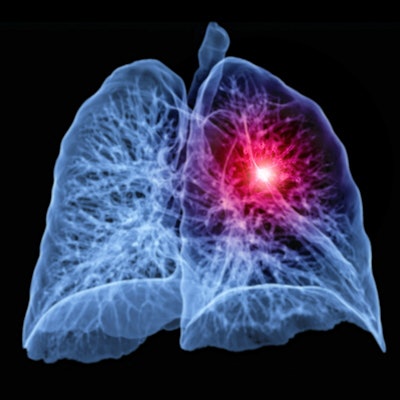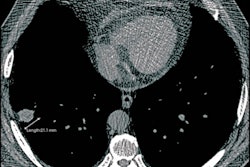
Racial disparities affect follow-up of incidental pulmonary nodules detected on CT scans, according to a presentation delivered at the recent virtual RSNA 2020 meeting. Researchers found race to be one of several factors that can affect appropriate follow-up.
Incidental pulmonary nodules are common, and they present with a wide range of potential malignancies, presenter Dr. Eduardo Jose Mortani Barbosa of the University of Pennsylvania in Philadelphia told session attendees. But not every patient gets the same follow-up.
"Low patient adherence to follow-up is well documented, and may lead to poor outcomes," he said. "Racial/ethnic minority and low socioeconomic status groups are at a systemic disadvantage to access healthcare resources."
Barbosa's group sought to evaluate racial disparities in incidental lung nodule follow-up using a "cascade of care" framework. The study included data from electronic medical records and the U.S. Census for 1,562 patients with incidental pulmonary nodules found on chest CT in 2016 and tracked their follow-up through 2019.
"The cascade of care for incidental pulmonary nodule management is a map of sequence of events that must happen for a successful outcome, that is, timely and appropriate follow-up," Barbosa said.
The care protocol consisted of six junctures. Barbosa's team found compliance drop-offs starting at provider communication of the nodule to the patient.
- Detection by radiologist and appropriate recommendation for follow-up: 100%
- Ordering provider acknowledges having received the report and recommendation: 100%
- Ordering provider communicates finding to patient: 69%
- Ordering provider orders follow-up: 56%
- Patient schedules follow-up: 54%
- Patient adheres to follow-up in a timely fashion: 43%
The team found disparities between non-white and white patients at every stage of the follow-up pathway, but particularly at the following:
| Discrepancies by race in how incidental lung nodules are handled | ||
| Metric | White patients | Black patients |
| Communication between provider and patient regarding incidental lung nodule findings | 80% | 55% |
| Ordering/scheduling follow-up imaging and timely adherence | 54% | 29% |
The group also found that Black patients had a higher likelihood of not adhering to or delaying follow-up imaging compared with their white peers, with an odds ratio of 2.5 compared with 1.3 after controlling for factors such as sociodemographics, provider-patient communication, and patient health/nodule characteristics.
Barbosa noted that communication between providers and their patients substantially increases the likelihood of patient adherence to follow-up but doesn't completely eliminate racial/ethnic disparities.
"Patients are most at risk for loss of follow-up between imaging diagnosis and ordering provider-patient communication of the incidental pulmonary nodule and between ordering and scheduling of follow-up exams and the timely completion of them," he said. "Our research offers a framework for health policy and clinical practice interventions aiming to improve outcomes related to [these findings] in the most disadvantaged racial/ethnic groups."



















